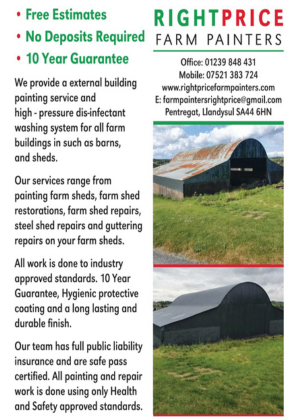IN RECENT developments across Wales, concerns have arisen over the use of reinforced autoclaved aerated concrete (RAAC) in various buildings. RAAC, a lightweight concrete material widely employed in construction between the 1950s and the mid-1990s, has raised alarm due to its potential for sudden failure as it ages and its limited lifespan.
The situation escalated in August when Withybush Hospital in Haverfordwest declared a major incident after discovering RAAC within its structure. This material issue extended to schools on Anglesey, where Ysgol David Hughes in Menai Bridge and Ysgol Uwchradd Caergybi in Holyhead closed temporarily due to concrete concerns. Ysgol David Hughes partially reopened on September 7 for selected year groups, while Ysgol Uwchradd Caergybi shifted to online learning for all students.
Additionally, St. David’s Hall, a prominent theater and music venue in Cardiff, was reported to contain RAAC in its ceiling. Cardiff Council reassured the public that the venue had undergone regular inspections over the past year, with no signs of deterioration in the RAAC present.
Furthermore, Bryn y Neuadd Hospital in Llanfairfechan had to close its catering department due to potential issues with the concrete. The Betsi Cadwaladr University Health Board relocated the canteen within the hospital grounds as a precaution.
To gauge the extent of this concern across Wales, ongoing investigations aim to provide comprehensive results within two weeks. The Health and Safety Executive emphasized the critical nature of the issue, noting that RAAC could “collapse with little or no notice.”
RAAC’s lightweight properties, resulting from aerated bubbles within the material, are the root of safety risks. Moisture can infiltrate these bubbles, causing the concrete to sag and ultimately fail. RAAC’s vulnerability to deterioration over time makes it imperative for buildings constructed between the 1950s and 1990s, without structural assessments, to be thoroughly examined.
Dave Sayce, a property expert, warned that RAAC failures often occur without warning signs, such as cracks or crumbling. Buildings with RAAC are also susceptible to collapse when exposed to moisture, which may result from roof leaks.
He also recommended residents of buildings constructed during this period to consider getting a survey to identify potential RAAC usage based on the material’s characteristics.
RAAC can be found in schools, hospitals, and various other structures. It was also used in social housing from the 1950s to the 1970s. Dave Sayce recommended residents of buildings constructed during this period to consider getting a survey to identify potential RAAC usage based on the material’s characteristics.
The Welsh Government has been collaborating with the UK Government and devolved governments since 2018 to manage RAAC-related issues. The Welsh Local Government Association raised awareness among local authorities in February 2020, following a safety alert issued by the Standing Committee on Structural Safety in 2019. In response, the UK Government’s Office of Government Property issued a ‘Safety Briefing Notice,’ emphasizing the life-expired and collapsing nature of RAAC.
In May of this year, the Welsh Government initiated a condition and energy survey of state-funded schools and colleges to identify structures suspected of containing RAAC for specialised structural inspections. However, until recently, the guidance on RAAC management did not result in school closures.
In July 2023, the UK Cabinet Office established the Cross-Government Reinforced Autoclaved Aerated Concrete (RAAC) Working Group. The Welsh Government became involved in August, but no new evidence regarding RAAC risks emerged during their meetings.
On August 31, 2023, the UK Government issued new guidance concerning RAAC in educational settings. This followed summer incidents that raised concerns about RAAC safety. The Welsh Government was informed verbally on September 1 and later received incomplete written evidence. This new evidence prompted a potential shift in RAAC safety approaches and health and safety management.
The Welsh Government promptly contacted all local authorities in Wales, and the investigation continues. To date, one hospital, two schools, and a Cardiff venue have been identified as having RAAC, with further assessments ongoing to ensure public safety.


















